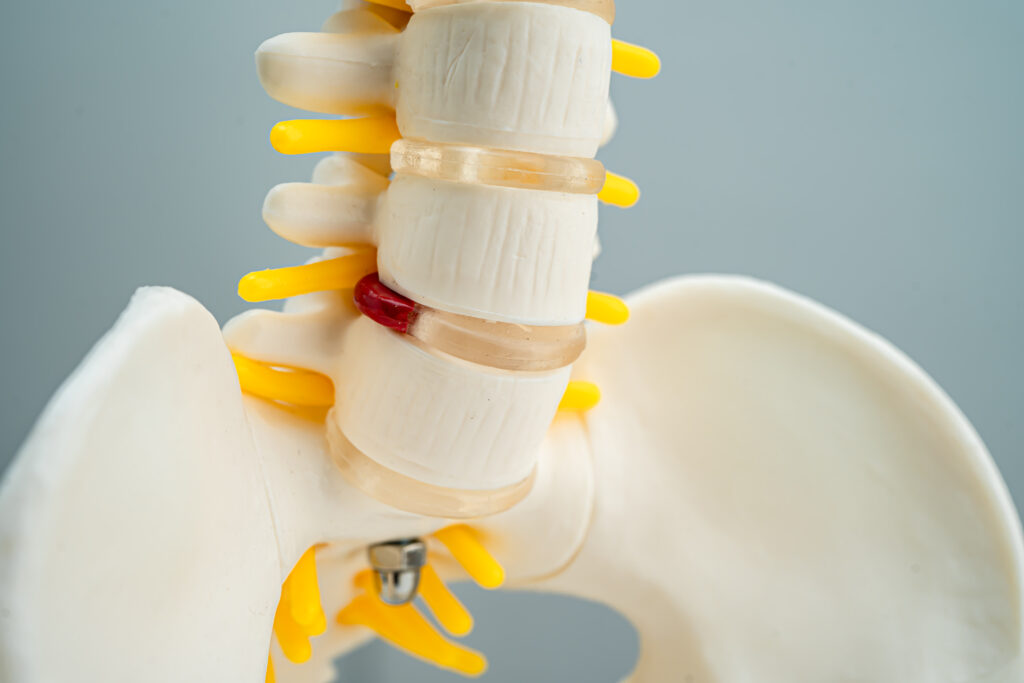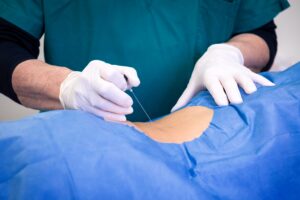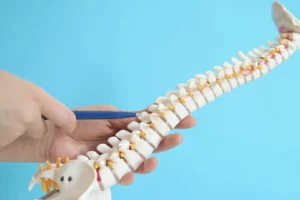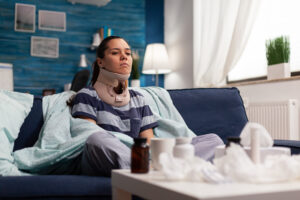The spine, a marvel of engineering in the human body, is a blend of strength and flexibility. It allows us to bend, twist, and carry loads, all while protecting the delicate spinal cord. Interspersed between the bony vertebrae are discs, which function as cushions, absorbing shocks and facilitating movement. However, these discs, despite their resilience, are susceptible to injury and wear. One of the most common disc-related issues is herniation. I believe that teaching my patients how to tell if you have a herniated disc is the first step toward effective treatment and recovery.
Unraveling the Herniated Disc
A disc becomes herniated when its soft, gel-like inner substance pushes out through a tear in its tougher exterior. Think of it as a jelly doughnut, where the jelly oozes out if the doughnut is squeezed. This protrusion can impinge on nearby nerves, leading to a myriad of symptoms. The severity and type of symptoms can vary based on the disc’s location and the extent of herniation.
The Telltale Signs of a Herniated Disc
Early detection can significantly influence treatment outcomes. Here’s how to tell if you have a herniated disc:
Localized Pain: Depending on the herniated disc’s location, pain can manifest in the lower back, neck, or even radiate to extremities. For instance, a lumbar herniation might cause sciatica, a sharp pain radiating down the leg.
Numbness or Tingling: This sensation can be likened to the feeling when a limb “falls asleep.” It can affect various body parts, depending on the compromised nerve.
Muscle Weakness: Impacted nerves can lead to muscle weakening, affecting daily activities. You might find it challenging to hold objects, or your legs might feel wobbly.
Reflex Changes: In some cases, reflexes in certain areas might be diminished or entirely absent.
Unexplained Muscle Spasms: These sudden, involuntary muscle contractions can be both painful and alarming, often resulting from nerve irritation.
What Causes a Herniated Disc?
Certain factors can increase the likelihood of experiencing a herniated disc.
Aging: Natural wear and tear, known as disc degeneration, is a common culprit. The discs lose their water content and flexibility with age, making them more prone to tears.
Physical Overexertion: Repetitive heavy lifting, especially without proper form, can strain the spine.
Body Weight: Carrying extra weight puts added stress on the lumbar discs.
Genetic Factors: Some individuals might have a genetic predisposition, making their discs more susceptible to herniation.
Sedentary Lifestyle: Prolonged sitting and lack of exercise can contribute to poor spine health.

When to Seek Medical Attention
While occasional back pain is common, certain signs warrant immediate attention from a healthcare professional. Persistent or escalating symptoms, such as those previously mentioned, lasting more than a week, or acute pain episodes accompanied by weakness or numbness, are particularly concerning. Additionally, if you’ve recently experienced any trauma, it’s imperative to consult with your doctor to ensure it hasn’t led to any complications.
How We Diagnose a Herniated Disc
Self-diagnosing a herniated disc based on symptoms is a sign that it is time to seek medical attention. Arriving at a definitive diagnosis involves a more comprehensive approach. This typically starts with a physical examination, where a thorough assessment of pain points, range of motion, and neurological checks is conducted. Advanced imaging, such as MRI scans, provides detailed visuals of the spine, emphasizing areas of herniation. Additionally, nerve conduction studies, including tools like Electromyograms, are employed to precisely identify the affected nerves.
Prevention and Management of Herniated Discs
Awareness is indeed half the battle when it comes to spinal health. By adopting a proactive approach, one can significantly mitigate risks. Regular exercise, especially exercises that strengthen the core muscles, provides enhanced support to the spine. It’s also essential to incorporate ergonomic practices in both work and home environments. This means choosing spine-friendly furnishings like ergonomic chairs, taking regular breaks to move around, and employing proper lifting techniques. Furthermore, maintaining a healthy weight through a balanced diet and consistent exercise is crucial to prevent unnecessary stress on the spine.

Experience the Excellence of The Institute for Comprehensive Spine Care
Your spine is the backbone of your well-being, and its health significantly influences your quality of life. Now that you know how to tell if you have a herniated disc, don’t wait for symptoms to escalate. Prioritize your spinal health and take the first step towards a vibrant, active life. Remember, a proactive approach today can secure your spinal well-being for the future.
At The Institute for Comprehensive Spine Care, my team and I are committed to providing top-tier, compassionate care for all your spinal health needs. My extensive experience and dedication to you ensure you’re in the best hands. Schedule a consultation today, and let us guide you on your journey to optimal spinal health. With our expertise and your commitment, a pain-free life is within reach.
















